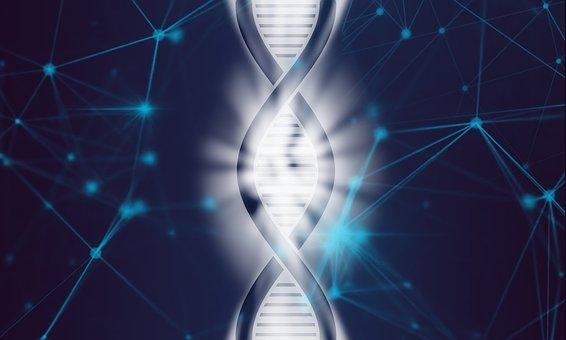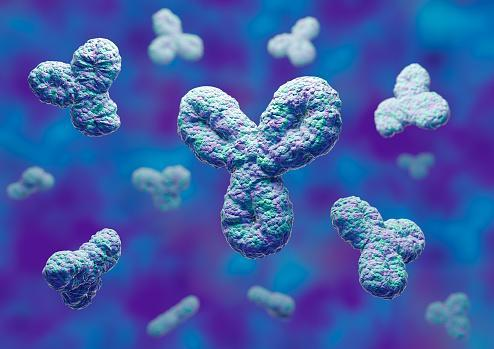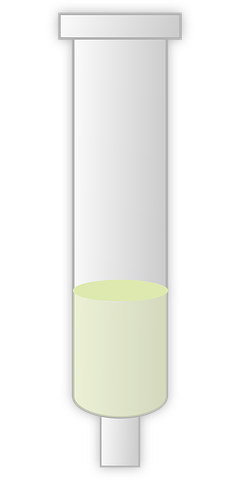5 Effective Methods For Protein Expression And Purification
Apr 29th 2022
Besides research, protein plays a vital role in all organisms' life and biochemical reactions. Proteins contain antibodies that protect the organism from disease-causing bacteria and viruses. Due to the increase in demand for protein, researchers are now concerned and have concentrated on synthesizing and producing large-scale protein to enhance more investigations and examinations.
This has been enhanced by improvements in laboratory technology in protein expression and purification services. Researchers tend to make protein on a small scale for studies and protein function verification purposes. In contrast, those produced on a large scale are majorly used for vaccine production, studying antibodies and enzymes. For custom protein expression, sequence steps must be followed adequately to ensure the quality yield of protein.
The protein expression and purification process are always affected by the expression host, which determines the method, technique, tools, and reagents to be used. Thus, the following article will survey five methods used in protein expression and purification.
What is protein expression?
Before we get deep into the discussion, we must define what custom protein expression is. Protein expression is simply the process of transcription and translation. This is where the RNA copy is made out of the DNA code. This process takes place in the living organism. Researchers can easily express the custom protein in the laboratory through the available laboratory techniques.
Protein production services have been in demand not only for research but also for the production of medicines and vaccines. Elisa Kit manufacturers have made the production of protein efficient by producing Elisa Kits which helps in measuring targeted protein, reliability, and consistency. If you wish to understand how to analyze Elisa's data, you can consult them.
Essentially, we also ought to understand what a recombinant protein expression is. Recombinant proteins are mostly encoded and accessed in the protein-expressing plasmid. This happens through changing the optimum protein expression services to access the protein functions. As a researcher, when expressing the recombinant protein, you can usually add, remove, or change the sequence used in protein-encoding by just altering one nucleotide, enabling you to examine an array of fundamental scientific problems and define the protein functions in both healthy and sick tissues. Apart from just research, advanced technology in recombinant protein expression is essential in facilitating the creation of medicines and vaccines.
During custom protein production, a recombinant expression system is a vital factor that determines the final yield. Different expression systems are used in the production of protein, such as bacteria, insects, yeast, and mammalian host systems. Bacterial expression systems are the most common and preferred host systems as they have a short doubling time. An example of the bacterial host is the E Coli expression system preferred due to its high protein yield.

Image source; https://cdn.pixabay.com/photo/2019/03/20/15/48/dna-4068826__340.jpg
What are antibodies?
Antibodies are one of the significant components of protein. Antibodies are the components of protein that aid in fighting disease-causing organisms such as viruses and bacteria. They are also crucial in the production of curative medicines and vaccines. Antibody production in the laboratory involves the safe injection of antigen samples in a specific animal which leads to the synthesis of many antigen-induced antibodies in the serum. This happens through a process known as antibody validation.
There are two types of antibodies; monoclonal and polyclonal antibodies. Most people tend to ask how to make polyclonal antibodies. The polyclonal antibody is isolated directly from the serum once the animal is injected with the antigen and has synthesized adequate antibodies. For custom monoclonal antibodies, the antibody-secreting spleen cell is combined with the immortal myeloma cells to create monoclonal hybridoma cell lines that express a particular antibody in the cell culture supernatant. Antibody sequencing services are essential for identifying sequence amino acids in antibodies.
Hybridoma cell line sequencing and clonal B cell sequencing are used in monoclonal antibody sequencing. You can always access adequate antibody production services from biochemists laboratories. Custom antibodies production services have been in rapid growth due to technological advancement. In addition, the custom antibody production process has been simplified hence allowing researchers to produce large-scale antibodies.

Image source; https://media.istockphoto.com/photos/human-antibodies-immunoglobulin-proteins-immune-system-picture-id1299289706?
One of the significant antibody components is peptides. Therefore, to ensure successful antibody synthesis, peptides have to be produced. Previously, Peptides synthesis was one of the most challenging and tiring tasks with little yield. However, with an improvement in technology, custom peptide synthesis has become easy, and it is now possible to produce a large amount at a given time. Peptide production can be classified as peptide bonds between two amino acids. Peptides are usually the flexible chains found in amino acids.
Production of different peptides and unique biological responses is now made possible by advanced technology and research knowledge. There are many methods of peptide production, like solid-phase and solution-phase synthesis. Just like protein, peptides must undergo a purification process post-production. Purification assists in removing any side products that the reactions might have formed during the production process, like the isomers. There are a hundred peptide synthesis companies that you can always sort out for their services.

Image source; https://media.istockphoto.com/photos/drugmodel-cyclosporine-picture-id522652099?
Gene’s production
Genes are responsible for encoding protein. Therefore, custom gene synthesis is a vital factor in protein expression and purification service as it determines the functions of a particular cell. Factors such as the location of the coned protein, transcriptional genes, the stability of the codons utilized in the foreign gene, the ribosome binding sites, and the number of foreign genes expressed affect the expression of foreign genes. The number of specific proteins synthesized in any cell depends on the balance in the protein's synthetic and degradative biochemical pathway.
As a result, there should be regulations of gene expression throughout the entire process of protein synthesis. Gene synthesis gets regulated by introducing the nucleus, primarily at the transcriptional level controlling the eukaryotes. Moreover, only a specific number of genes get expressed in cells. Gene expression is typically affected by environmental transformations and needs regulatory precautions. The availability of nutrients tends to affect the prokaryotes' genes.
The nutrients allow the bacterial organisms to effectively change the transcription patterns in response to environmental conditions. There are top-notch gene synthesis companies that have specialized in producing high-quality genes.
Protein purification
Protein purification service is one of the crucial processes in protein production. Protein purification involves isolating proteins from a concentrated mixture of other unwanted proteins, cells, and tissues. Protein purification is essential as it helps determine protein's function, interaction, and structure. The required protein can be separated from the non-protein components during the purification process. Protein characteristics such as variance in size, physical and chemical features, biological activity, and binding affinity are essential in separation processes.
Protein purification is a significant stage in custom protein synthesis that can be done preoperatively or analytically. Several companies have specialized in the provision of the protein purification process. There are four fundamental protein purification steps: Cell lysis, Protein binding to a matrix, Washing, and Elution. The core purpose of protein purification can be categorized as preparative purification and analytical purification. The goal of preparative purification is to create many purified proteins for later usage.
Several preparative purification procedures are frequently used to remove unwanted proteins, such as host cell proteins, which could pose a patient's health risk. Analytical purification involves separating small amounts of proteins used for analysis, such as quantification, protein identification, or research such as function studies and post-translational modification. Let’s look at methods used in protein purification.
Five significant methods used in protein purification
Extraction
Extraction is a purification procedure that involves bringing out the protein into solution from the cells by breaking the tissues or cells on the host systems. If the organism has not synthesized the required protein into the required solution, then the number one and crucial stage is to ensure the disordering of the cells where the proteins are found. Several methods are used, such as sonication, repeated freezing, thawing, homogenization through high pressure or grinding, or permeabilization through detergents or enzymes. Further, this method releases proteases during the cell lysis, enabling the onset of digestion of proteins in the solution.
If the protein reacts with proteolysis, the purification process should be done quickly, keeping the extract cool to regulate the digestion process. Alternatively, protease inhibitors can be used just before the cell disruption in the lysis stages. The extraction method applied in purification relies on the protein fragility and host cells. Soluble protein will also remain solvent and could be separated from the cell membrane through centrifugation.
Chromatography
Chromatography is one of the common and preferred purification methods. This is due to the associated benefits compared to other methods. For example, chromatography is associated with high-resolution efficiency, which allows the separation of complicated and crude mixtures, even those with similar molecular components. Further, chromatography is efficient in capturing diluted molecules in a diluted solution. The main principle of the chromatography purification method is to separate a bigger pool of protein into several smaller pools rich in the required protein. To use this method, some basic and specific equipment is needed.
Further Chromatography method involves more than one chromatographic step. One of the basic techniques used in the chromatography purification process is the Flowing a protein solution through a column filled with various materials. The column material allows the multiple types of protein to interact in numerous ways. The time they take to transit the column or the condition under which the protein is eluted is what distinguishes the protein particles. Different chromatography methods are used in protein purification: Immunoaffinity Chromatography, Affinity Chromatography, and Metal Binding Size.

Image source; https://cdn.pixabay.com/photo/2013/07/13/10/25/chromatography-157196__480.png
Precipitation and Differential Solubilisation
Precipitation and differential Solubilisation methods are suitable for large-scale protein purification. In this method, the physical-chemical properties of the polypeptides are exploited. Ammonium sulfate is a valuable reagent used in this method to precipitate proteins by applying substantial quantities of ammonium sulfate and then collecting various portions of the precipitate proteins.
Recombinant proteins are precipitated from the host cell to concentrate the required protein before advancing to the other steps with more defined purification columns. Due to the various factors and influences in the expression system, the recombinant protein can naturally precipitate as an inclusion body. Precipitation and differential Solubilisation methods are among the most economical methods used in the protein purification process, incredibly when purifying a large protein.
Ultracentrifugation
The ultracentrifugation method is a purification technique that applies a centrifugal force to sort out a mixture of molecules that have distinguished masses and densities in a suspended liquid. A protein mixture is placed in a container that is spun at a fast speed, and the acceleration of an object causes each particle to exert an outward force proportional to its mass. The required particles are moved in the liquid by centrifugal force.
The liquid subjects the particles to a resistance force that allows them to travel through the fluid. Compared to less massive molecules, Massive, tiny, and heavy particles tend to move outward when the sample is spun in a centrifuge.
Gel filtration
Gel filtration is one of the simplest purification methods used in separating components, especially those of different sizes. Gel filtration is part of the chromatography technique. The filtration is usually packed in columns to perform a purification process through gel filtration, leading to the packed bed's formation. Since the molecules and particles have different chemical and physical stability, the component is packed in a porous matrix. The crammed bed is then moderated using a hedge that fills the matrix’s pores and the space between the particles.
The principle of gel filtration is that the molecules of a specific size (big) are filtered from the pores. In contrast, the smaller molecules are allowed to access the interior of the pores either partly or wholly. For example, the protein molecules are usually smaller than the other particles after protein production. Hence, it is easy to filter them out and get the required protein.
Wrapping up
Protein expression and the purification process are topics of concern by most biochemist researchers. Due to thorough research, the protein expression process has continuously been simplified, leading to a high yield of quality protein. In addition, there has been a rapid development of better purification methods leading to the production of pure and quality protein. You can always sort for protein expression and purification services in the nearest biochemist laboratory. In addition, you can learn more through the available online websites and scholarly articles about protein expression and purification.

